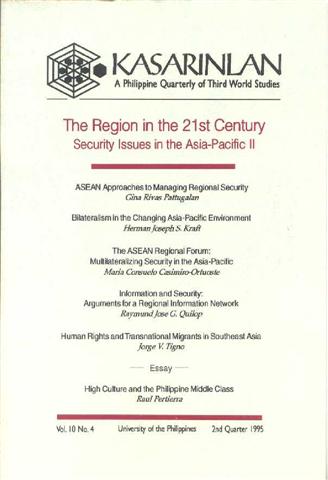Bilateralism in the Changing Asia-Pacific Environment
Abstract
The Security structure of the Asia-Pacific during the Cold War is characterized by a web of interlocking bilateral alliances woven by the United States. Through this ‘hub and spokes’ mechanism, American influence in the region was guaranteed as states dealt with one another by means of their respective bilateral linkages with Washington. This arrangement effectively prevented regional states and actors from challenging the hegemony of the United States over the conduct of regional security affairs.The end of the Cold War, the consequent decline of American military presence in the region, and the emergence of new geostrategic players have made this network of bilateral alliances inadequate, if not outdated, for the complex and uncertain post-Cold War international system. This, in turn, necessitates a rethinking of bilateralism and its place in the new regional security environment. With Philippine-United States Relations as backdrop, it is argued that until multilateral mechanisms are designated to help diffuse crises and, in conditions of conflict, actually enforced the uneven distribution of power among states will continue to provide the reason for small states to seek the assistance of stronger states through bilateral security arrangement. Bilateral alliances with neighbors and other regional actors, should therefore, be enhanced with the view of complementing multilateral efforts towards security cooperation. In the last analysis, however, while bilateralism remains an important aspect of Asia Pacific security, a collective effort is indispensable for ensuring regional stability.
Published
2008-06-05
How to Cite
KRAFT, Herman Joseph S..
Bilateralism in the Changing Asia-Pacific Environment.
Kasarinlan: Philippine Journal of Third World Studies, [S.l.], v. 10, n. 4, june 2008.
ISSN 2012-080X.
Available at: <https://journals.upd.edu.ph/index.php/kasarinlan/article/view/873>. Date accessed: 28 aug. 2025.
Section
Features
By submitting a manuscript, the authors agree that the exclusive rights to reproduce and distribute the article have been given to the Third World Studies Center.



